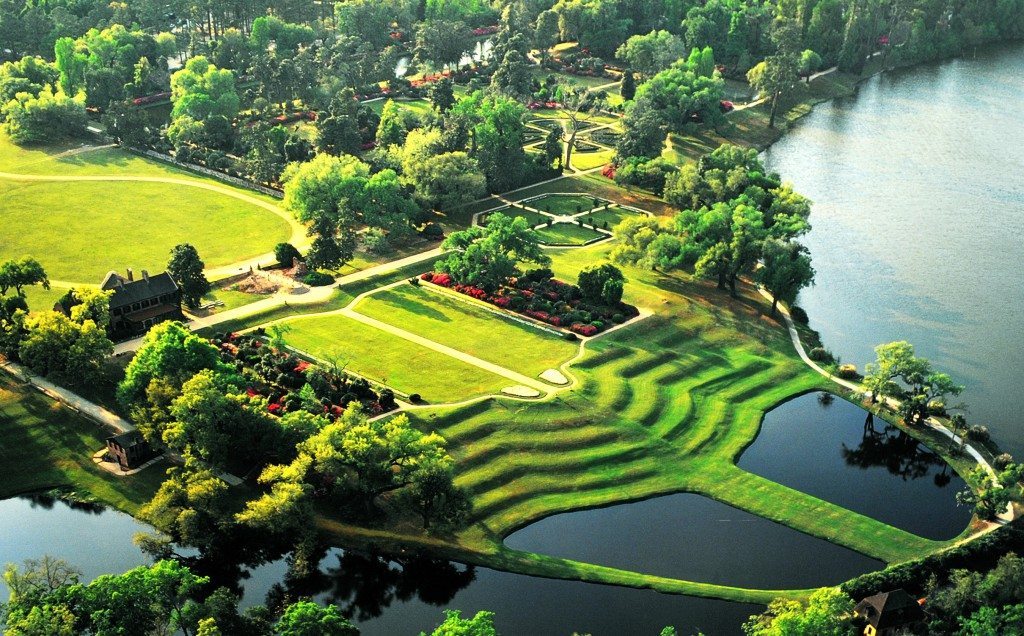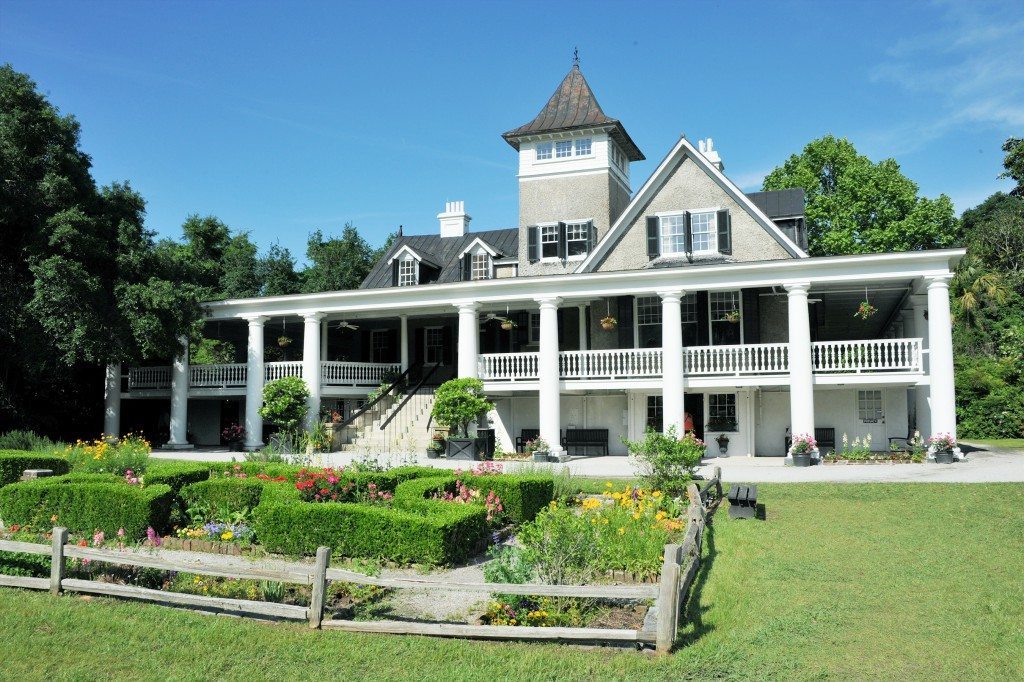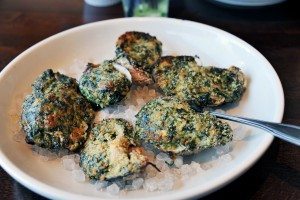
(Photos by Tab Hauser)
The two darling waterfront southern cities to visit are Savannah and Charleston. These belles of the South offer a different and distinct personality from each other. They are located two hours apart and can both be visited in a week. Each city started pre-revolutionary, but grew up during the antebellum period and has plenty of architecture to reflect those eras.
In our first of a two-part story we will cover Charleston, SC.
Charleston is known for its well-preserved and pastel colored mansions and homes complete with gas-lit lanterns alongside its cobblestone streets. Many homes date over 200 years with some predating the American Revolution. Several have been turned into important museums. Charleston is a fine destination to put on your comfortable shoes and stroll around the French Quarter, the Battery and any one of several streets south of Broad. All this walking will be a good thing because it will give you an appetite for all the wonderful southern style and seafood available.
Charleston was founded in 1670 by the British. While the city has manners, charm and grace, it also has a colorful and checkered past. It was attacked by the Spanish early on, being the southernmost port of the British. Blackbeard the pirate laid siege here in 1718. It was again attacked by the British early in the Revolutionary War and in 1861 fired the first shots of the Civil War. In 1886, a major earthquake damaged 2000 buildings. Evidence of that damage and repair can be seen on many buildings today. In 1989 Hurricane Hugo devastated much of lower Charleston with several feet of water creating havoc. This year it was the sight of an awful hate attack at the old Emanuel African Methodist Episcopal Church.
Our visit had us spend four nights and three full days at the Embassy Suites because it was located on King Street, near the visitor’s center, and only a 20-minute walk to the center of town. The Embassy Suites is built into a landmarked restored citadel with an imposing look. The walls to our room had the original gun ports high up.
After our check-in we walked over to the visitor center to get a map and see what is going on in Charleston. Here we arranged a Grayline mini-bus tour to get acclimated with the streets and learn about the city. This was an informative 90-minute ride with stops for photos and a place to stretch out and see the pretty mansions at the Battery. After our tour we visited our first mansion, called the Aiken-Rhett House. This partially restored mansion was built in 1820. Viewing it is very different from the other museum houses around the city because it was abandoned with the rooms, leftover furniture, wallpaper and even old carriages just withering away. The tour was self-guided, starting with the back of the property containing the carriages, slave quarters and cooking areas. The main house looked much better on the outside, with its large terraces and big doors to let ventilation in. You should allow about 30 minutes here.
The next day we took the two-hour Charleston Strolls Walking Tour. Our guide was a 17th-generation Charlestonian who directed us on an easy one and a half-mile walk. He discussed the history of Charleston and its architecture. Our tour included Rainbow Row, a fine showing of antebellum homes, a walk on the historic Battery with a view, and a brief discussion on Fort Sumter. He also showed us a few historic gardens and courtyards. During our walk he discussed the influence of the French, as well as the Revolutionary and Civil wars.

After a good half a day in the city we decided to drive 40 minutes to the Middleton Place Plantation. Construction at Middleton Place started in the 1730 by the first president of Continental Congress. It has 65 beautiful acres of what are the oldest landscaped gardens in the country. The gardens are said to be from French and English designs and are the real draw here. Visitors pay admission to stroll through the gardens with a self-guided booklet or take one of the free tours. For a little extra we toured the remaining home on the property and viewed the family’s artifacts. The main mansion lies in ruins next door, as it was burned by Union soldiers during the Civil War.
We timed our return to Charleston for late in the afternoon, which was perfect for a stroll on the Battery and streets nearby. Walking along the water on Murray Boulevard you will see the pastel mansions and inns pick up their colors, as the late afternoon sun beams down on them. After walking the Battery, go up a few blocks and just wander. Walking in this area we saw many old historic homes restored, with their dates on the front. Most homes had gas-lit lights by the door. We found it peaceful this time of the day and nice to get away from some of the tourists and bustle.
The next morning we headed to the Fort Sumter Visitor Center to catch the first boat out. Fort Sumter is a 30-minute ride to the mouth of the Charleston harbor. While the fort has a long history, most know it as the place of the start of the Civil War. There we learned a lot about the people and the details of those first shots. After the tour there was plenty of time to visit the different levels and cannons of the fort. Our tour ended next door to the aquarium. Our one-hour visit there had us view different fish tanks and learn about the local sea life.
As Charleston is an eating town, we decided a highlight that day would be an upscale lunch at one of the classiest places in the city. The Palmetto Café is in the center of the five-star Belmond Hotel on Meeting Street, serving upscale “low country” food. Here I enjoyed a southern favorite called She Crab soup, made like no other place since my visit to the area. My main course was a generous portion of lump crab salad squeezed between sliced avocado and a multigrain cracker. The taste was fresh and exquisite. My non-
seafood-eating wife devoured her first course of slow-cooked, open-face short rib sliders with the local pimento cheese on it. Her second course was the “21” burger that was gourmet all the way. This was paired with one of their excellent glasses of wine. Service here could not have been any finer. (Later that night we retreated to the Belmond’s old-style wood and leather bar to hear some good jazz music).
We walked off our fine meal by heading south to the Heyward-Washington House. This house, built by Thomas Heyward, a signer of the Declaration of Independence, was built in 1772. It is furnished with some of the finest colonial-era furniture from Charleston. President Washington’s name was added to the house after the city rented it for him in May of 1791, during his weeklong stay. Every guided tour in town talks about this visit and how the President was extremely popular with the ladies of Charleston. The house also features a circa 1740 kitchen and small formal gardens.

We next visited Nathaniel Russell House just around the corner. This house was built in 1808 and is considered one of the most important neoclassical style homes in the country. The brick three-story home features three big rooms on each floor, each having a different design. The showcase of the home is the free flowing cantilevered staircase that connects all three floors. The place is meticulously decorated with fine art and furniture from the 18th and 19th centuries. It is one of the more unique restored homes we had visited. Allow an hour for each of the above two houses.
Much of our last full day was spent outside Charleston. As a person who enjoys a good cup of tea, we visited the Charleston Tea Plantation 45 minutes away on Wadmalaw Island. Different varieties of black and green tea grow here on 127 acres. It is the United States’ only commercial tea grower. The tour guides are interesting and entertaining, as you are taken around by an old trolley bus. Tours start or end with a look over the production area where, in season, you will see the tea being processed. Their shop offers all the hot and cold tea you can drink free.
Twenty minutes from tea plantation is the Firefly Distillery. Firefly is most known for their sweet tea vodka, which uses tea from the Charleston Tea Plantation. Presently they produce six different moonshines, five different vodkas and a full line of cordial-style beverages. There is something here for everyone. One cordial that surprised us was their banana pudding that tasted much like the name and did not have any cream. Firefly also produces wine from the local muscadine grapes. While we recommend almost all of their spirits, the wine was not to our taste.

The Magnolia Plantation was our next destination, about 30 minutes from Firefly. We saved this popular place for later in the day when the crowds dwindled a little. Magnolia Plantation combines history and nature in one place. This place dates back to 1676 and comprises 464 acres on the Ashley River. Visitors here need to sign up for different tours that are scheduled during the day. We started with the 45-minute nature tram tour that drove around the wetlands and forest and saw different birds and alligators. From there we hopped on a pontoon boat for a slow-moving rice field boat tour that lasted an hour. This relaxing ride had us get up close to the many alligators that call these former rice fields home. On both tours the guides explained the history and the landscaping of Magnolia Plantation. Our last tour was the Drayton mansion, where a guide explained the history of its plantation and family. After the tour, we strolled on our own through part of the gardens and a then a boardwalk trail over the marshland.
On our last night we took the Dark Side of Charleston walking tour. This rated R-style tour takes you to the former seedier area of Charleston and explains its history. Our guide, a retired teacher, discussed the former red light district and why prostitutes wore red shoes. We ended in a park, where she explained the origins of some of the most used curse words.
On our last morning before leaving Charleston we stopped at Congregation Kahal Kadosh Beth Elohim for the morning tour. This is the fourth oldest synagogue in the country, established in 1740 and surpassed in age by the temple in Savannah by five years. It is also the oldest continuous synagogue. Here docents discussed the history and tolerance of Jews by the British in the 18th century. Charleston is also the birthplace of the Reform movement.

We recommend lunch at La Palmetto Café, if you want a gourmet treat. Two other well-known Charleston restaurants we tried were Hyman’s for informal seafood and Magnolia’s. During peak times at Hyman’s there is always a line. Rather than wait an hour for a table, we picked up two stools at the bar and had a nice casual plate of seafood. Their hush puppies can be addicting. Magnolia’s, on the other hand, does take reservations. We found the southern-style food and service very good. When looking for a place to eat we recommend looking on State near Market Street.
For more information about all things Charleston, SC, go to www.charlestoncvb.com. See the Sept. 2 edition for part two about Savannah, GA.


















